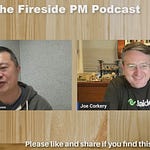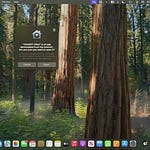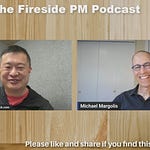“We Are Not in Kansas (or Creatorland) Anymore”
When I kicked off this Fireside PM interview with Ben Grubbs, I knew we’d cover the creator economy. What I didn’t expect was how much of it would end up being an MBA seminar for product managers.
Ben isn’t just another ex-YouTube guy with creator war stories. He’s seen the evolution of the online video ecosystem from its scrappy, quirky beginnings to the billion-dollar global marketplace it is today. His vantage point spans across YouTube FanFest, the launch of YouTube Kids, and later, his own venture Creator+.
But this isn’t a nostalgia trip. This conversation is about understanding where the creator economy went right, where it went off the rails, and what PMs and builders can learn from those who survived—and thrived.
Let’s break it down.
1. Don’t Just Sell Picks and Shovels—Sell Gold Bars Too
There’s an old startup trope: during a gold rush, the people who make the money are the ones selling picks and shovels.
Ben and I reflected on this assumption when it came to the 2021–2022 wave of creator economy startups—tools for analytics, monetization, editing, payroll, and more.
A lot of those bets fizzled.
Why?
Because the “miners”—the creators—were not your typical enterprise buyers. Most didn’t make enough to justify expensive tools, and those who did weren’t being well-served.
“You had companies working with hundreds or thousands of creators,” Ben said. “But they were all Tier 5 or Tier 6. The top creators—the ones running real businesses—weren’t touching these tools. The startups couldn’t crack that ceiling.”
Creators with scale (think Tier 1) needed tools built with deep empathy for their workflows—but often the tool builders didn’t even have relationships with these creators.
It’s a warning for PMs: Just because there’s a problem doesn’t mean the solution is a venture-scale business.
Ben would often gut-check startup ideas by calling former colleagues at YouTube to ask if the feature in question was in the product roadmap.
“If they told me it was far down the list—great. That’s a two-year runway. But if it was near the top? I’d pass.”
Takeaway for PMs: Before betting your career or company on a “picks and shovels” play, ask:
Can I serve the high-value users, or am I stuck with long-tail?
Is this something the platform will inevitably build?
Does this idea have cross-platform defensibility?
If the answer to all three is “no,” it’s probably not a durable business.
2. The Myth of the Accidental Creator
One of the most common origin stories in the creator economy is the passionate hobbyist who stumbled into success. But that’s no longer the only model—or even the dominant one.
Ben contrasted the early YouTube generation with today’s operator-led brands like Good Good Golf, where content wasn’t the product—it was the acquisition channel.
“This wasn’t some happy accident. Good Good had a clear business strategy from Day One. Content was the top-of-funnel. They were always going to build a real consumer business.”
And build they did. Good Good went from viral YouTube content to a thriving golf apparel and equipment brand, all while keeping production margins high and paid marketing spend low.
How? They applied DTC logic to a creator-native model. Instead of paying for reach, YouTube paid them to market their own products.
“Some DTC founders were stunned by their margins. But they didn’t realize: Good Good gets paid for their marketing.”
Ben’s point: this isn’t selling out. It’s growing up.
And it’s working.
Actionable Tip for PMs: When evaluating growth loops, ask yourself:
Is our content serving a bigger business objective?
Can our audience also become customers?
Are we building a brand—or just renting attention?
3. Build for the Power Law
We all know the creator economy is a power-law business. But what does that mean for those building around it?
Ben shared a fascinating stat from his YouTube days: at one point, 4,500 creators met the threshold to qualify for top-tier partnership. But YouTube had resources to serve just 500.
“We couldn’t support everyone. And the people who qualified were far more than we could manage. That’s when I realized: there's a huge gap.”
That gap created opportunities—but only if you could build for the whales.
Most of the SaaS tools went after the long tail. Wrong call.
“The top creators are basically SMBs. They need operational support, yes—but they also need defensible strategy, content licensing, IP management. That’s not just software—that’s consulting, services, and deal-making.”
Moonbug is a perfect example.
They weren’t a tool. They were a studio that centralized production, built IP (like Cocomelon), and sold toys, media rights, and more. They exited for over a billion dollars.
For PMs and founders, the takeaway is this:
Don’t assume the long tail is the market.
Go upstream. Serve the whales.
Focus on full-stack solutions, not just utilities.
If you’re not building something worth $10M+ in ARR from a dozen clients, you're probably building a feature, not a business.
4. MrBeast Is a Company, Not Just a Creator—and That’s the Point
We couldn’t have this convo without talking about MrBeast.
Ben sees Jimmy Donaldson as a pioneer not just in content, but in company structure. His organization isn't a hobbyist’s shop—it’s a holding company with a real CEO.
“Jimmy’s not the CEO. He’s the chairman. They hired a real operator from public markets. That person is building a corporate org. They’re hiring institutional people. It’s becoming a conglomerate.”
Unlike most creator ventures—where investors buy into just one slice of the pie—MrBeast’s holding company gives investors exposure to all ventures.
Think Alphabet, not a side hustle.
“It’s better alignment. If you’re putting in capital, you want access to the whole thing—not just the candy bar business or the mobile game.”
And that model might just be repeatable.
As Ben put it: “A lot of creators say they want to be CEOs. But once they see what CEOs actually do—HR, legal, compliance—they change their mind fast.”
Jimmy didn’t want to be bogged down in operations. So he hired someone who could be.
PM Insight: If you're working with high-talent individuals—creators, researchers, engineers—don’t just elevate them to management. Design orgs where they can focus on their strengths and bring in ops leaders to scale.
5. AI Is Not the End. It’s the Efficiency Revolution.
Toward the end of the episode, we dove into AI’s impact on the creator economy.
Ben doesn’t see it as a doomsday scenario. Quite the opposite.
“One animation company showed me a tool that turned a sketch into a production-ready 3D model—in real time. That’s insane. The question is: do you lower your prices… or do you double your margin?”
That’s the rub.
AI will reduce production costs. Which means more creators will have studio-grade tools at their fingertips. It also means fewer people per production.
“I was on a shoot with 50 people. Half weren’t doing anything. I realized the producer brought them in for optics—to make it look big-budget.”
In other words, there’s fat to be trimmed. And AI is the scalpel.
I brought up the stability of the power-law impact. The best AI-assisted content will still win. Most will get buried.
“It’s like CGI in the movies. People feared it would kill cinema. Instead, it became standard. AI might be the same—just another tool.”
For your PM roadmap, this means:
Expect higher expectations from users.
Deliver faster, smarter workflows.
Don’t fight AI—integrate it.
TL;DR: Actionable Advice for PMs in Silicon Valley
Here are the five key lessons from my talk with Ben Grubbs that every PM should remember:
1. Validate Against the Platform’s Roadmap
Before building around YouTube, TikTok, or Instagram, ask: Is this 12 months from being native? If yes, pivot.
2. Serve the Top of the Pyramid
The most successful creators need full-stack services and strategic guidance—not basic tools.
3. Build Brand, Not Just Product
Creators who win big start with brand ambition, not content luck. Align your product roadmap accordingly.
4. Separate Creator Talent from CEO Skillsets
Great creators aren’t always great operators. Your org chart needs to reflect that.
5. Use AI to Win on Efficiency
AI won’t replace you—but the PM who uses AI will. Bake it into production and product from the ground up.
Final Thoughts: Betting on the Right Side of Disruption
As Ben told me:
“You want to be on the side of the disruptor. Not waiting to get disrupted.”
That’s never been truer than in 2025. Whether you're working at a Big Tech platform, building the next venture-backed app, or leading product at a creator startup—this space is still changing fast so go where the puck is going and realize that puck is leaping ahead every month.
If you're navigating a challenging PM role or trying to make your next career move in tech, I offer one-on-one coaching through TomLeungCoaching.com. For companies that want to accelerate their product strategy or AI roadmap, check out my advisory work at PaloAltoFoundry.com.
OK, enough pontificating. Let’s get back to work.










